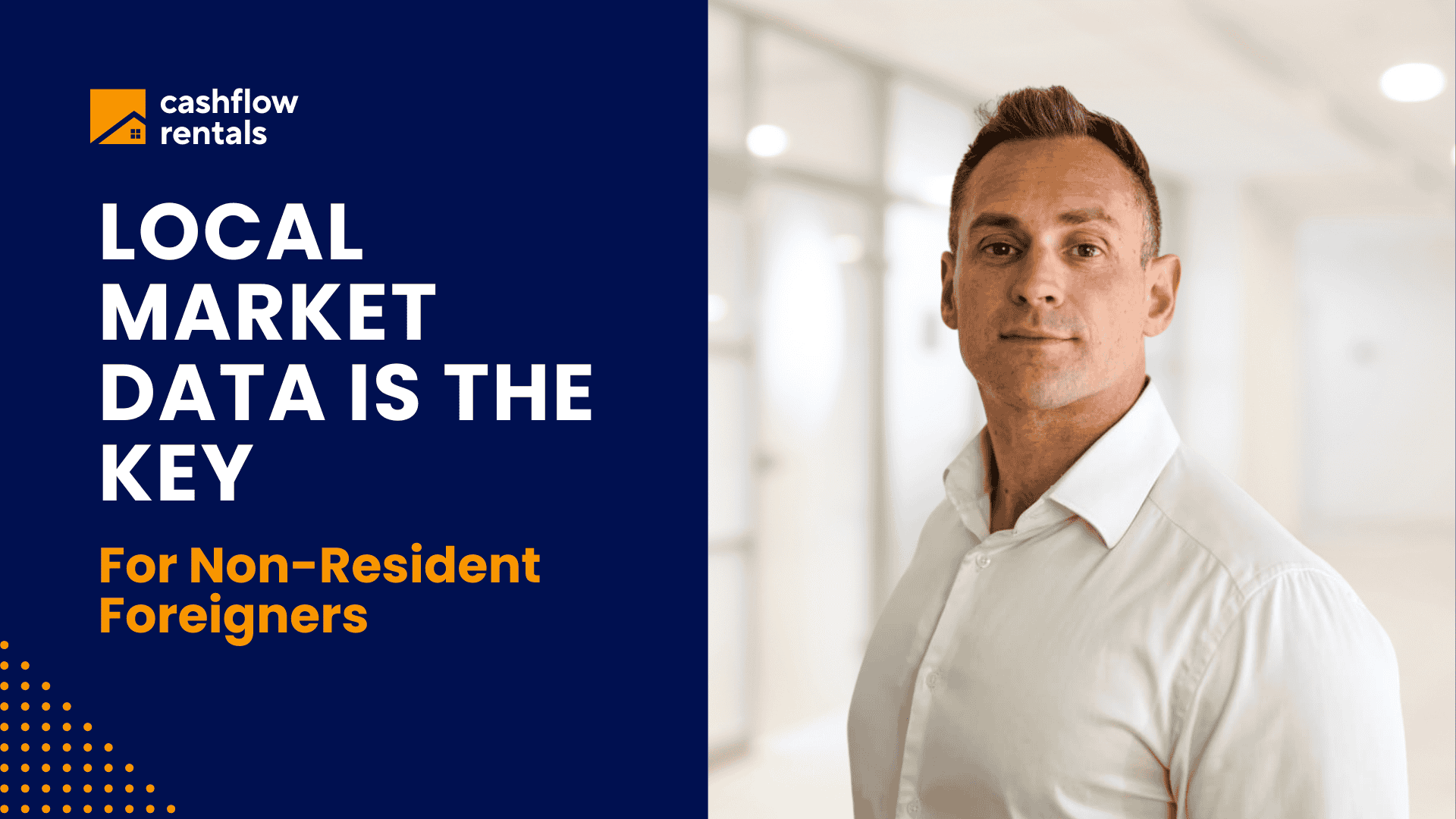The Hidden Geography of US Real Estate Opportunity
FREE DOWNLOAD: 10 Costly Mistakes Foreigners Make Buying U.S. Real Estate
Most investors fixate on regional housing data. They analyse inventory levels, median sales prices, and days on market across entire metro areas. For me, this approach misses the best opportunities hidden within America’s neighborhoods.
After acquiring over 120 US properties as a foreign investor since 2016, I learned pretty quick that citywide statistics become nearly useless when evaluating a specific house on a specific street.
The real magic lies in neighborhood-level analysis.
Related: Why Foreigners Are Buying Investment Properties in the Northeast Midwest and South
The Hyperlocal Advantage
Cleveland is one of the best US property markets for foreign investors, and provides a perfect case study. While census data shows y-o-y population growth across the Greater Cleveland metro, scratching the surface and breaking down the data reveals where the true investment opportunities exist.
Young professionals are moving into the city center, occupying expensive new apartment buildings, as witneesed by the huge hike in city income tax revenue. But this influx of new, wealthier residents has displaced the low and middle-income families who historically lived in these neighborhoods.
These families aren’t leaving the metro area. They’re relocating to suburban neighborhoods within commuting distance. In short, innner city gentrification is driving suburban expansion.
This internal population shift creates pockets of intense demand that regional data completely masks. In these targeted suburban neighborhoods, fully-renovated homes sell within days. Quality rentals attract over 100 applications.
For foreigners looking for property investments in the USA, identifying these hyperlocal patterns creates extraordinary opportunity.
Related: How to Get a Foreign National Mortgage Without a Visa or SSN
Translating Insights Into Remote Investment Strategy
When investing from overseas, we first let the data walk the street for us. We track rising prices, falling vacancy rates, and the speed at which rental listings disappear.
But data alone isn’t enough. We combine these metrics with physical walkthroughs by trusted local partners. They become our eyes and ears.
We also maintain direct relationships with realtors and property managers. These grass-roots operators know what’s really happening in the market before it shows up in any report.
To monitor hyperlocal rental demand, we track online rental listings in our target zip codes. As data accumulates, patterns emerge. We can see which property types command premium rents and how quickly they lease (and for what price).
Related: Population Trends Driving Foreign Investment In USA Property
The Truth About Inventory-to-Sales Ratios
Rising inventory typically signals either more sellers entering the market or fewer buyers – or both. But the real value lies in understanding why these shifts occur in specific neighborhoods.
Is it mortgage rates? Population shifts? Affordability issues? Price ceilings? Or simply a market slowdown?
These nuances rarely appear in market reports. They come from conversations with local realtors, mortgage brokers and property managers who interact daily with buyers, sellers, and renters.
Related: The Best USA Mortgages for Foreign Nationals in 2025
Counterintuitive Success: The Pittsburgh Periphery Play
In 2020, I purchased multiple houses in a small working-class town north of Pittsburgh. The local population had been declining for decades. Housing stock was deteriorating. Sales data looked terrible.
But the properties were extraordinarily cheap – $25,000 for three-bedroom single-family homes.
What I noticed was that housing prices in surrounding towns were rising faster than household incomes. Logic suggested an eventual population shift as families sought affordability.
That prediction proved correct. I’m now selling those properties for over $100,000 each – a 300%+ return on equity in just five years.
This opportunity existed precisely because conventional market data steered most investors away.
Related: Real Estate Closing Costs in the USA for for Foreign Property Investors
Rethinking Cap Rates
Most investors view capitalization rates purely as return metrics. I see them differently.
For me, cap rate functions primarily as a risk indicator. Properties with 10%+ cap rates almost invariably come with tenant issues, deferred maintenance, and neighborhood challenges.
This perspective shapes our acquisition strategy. We focus on properties with moderate cap rates in improving neighborhoods rather than chasing the highest yields in declining areas.
Related: Cleveland’s Population Shift is Driving Real Estate Investing Opportunities
Remote Due Diligence That Actually Works
Evaluating properties from thousands of miles away requires a systematic approach. We begin with video walkthroughs from local partners, followed by independent home inspections and appraisals.
The critical step most investors miss? Actually speaking with the inspectors and appraisers. These professionals walk these streets daily. Their local knowledge often exceeds what appears in their formal reports.
A home inspector in that Pittsburgh suburb mentioned that most homes in the area had sewer line issues, despite not including sewer scopes in his standard inspections. Based on this casual observation, we began commissioning sewer inspections for every acquisition.
This single insight saved us tens of thousands in unexpected repairs.
Related: Hidden Risks for Section 8 Property Investments
Financing Realities for Foreign Investors
As non-US citizens using foreign national mortgages we typically pay slightly higher interest rates. Lenders price in the perceived additional risk of lending to overseas borrowers.
This financing reality shapes our market selection. We must focus on areas with a more balanced blend of quity growth and cash flow potential to offset the higher borrowing costs.
We also prioritize fully renovated properties that attract quality tenants, maximize rental income, and minimize maintenance and capital expenditures.
Related: Landlord Friendly Real Estate Markets for Overseas Property Investors
Building Your Remote Investment Team
Finding reliable local operators is perhaps the most critical success factor for foreign investors. Our vetting process relies heavily on referrals and ongoing oversight.
We never pay for anything upfront. We verify all information with second opinions. Building a solid team determines success or failure when investing from overseas.
Related: Navigating US Mortgage Rate Uncertainty for Foreign Property Investors
The Future of Opportunity
Rather than focusing exclusively on inventory metrics, I now prioritize areas where housing affordability and cost of living are driving demand for quality housing.
American families want to rent and own in suburban markets that offer proximity to stable employment and affordable living costs. Housing inventory is projected to grow by approximately 15% through 2025, bringing levels closer to pre-pandemic norms. This provides greater selection for buyers but varies significantly by region.
Foreign investors are increasingly recognizing opportunities in markets that offer affordable entry points combined with strong economic fundamentals.
The opportunity landscape continues to evolve, but the fundamental principle remains: look beyond regional data to find the neighborhood-level dynamics that create true investment potential.
The most profitable investments often exist in places where the macro data tells you not to look.
FREE DOWNLOAD: 10 Costly Mistakes Foreigners Make Buying U.S. Real Estate







![USA Property Investment for Foreign Buyers [2025 Guide]](https://cashflowrentals.net/wp-content/uploads/2025/07/USA-Property-Investment-for-Foreigners-Expert-2025-Guide-500x383.png)



